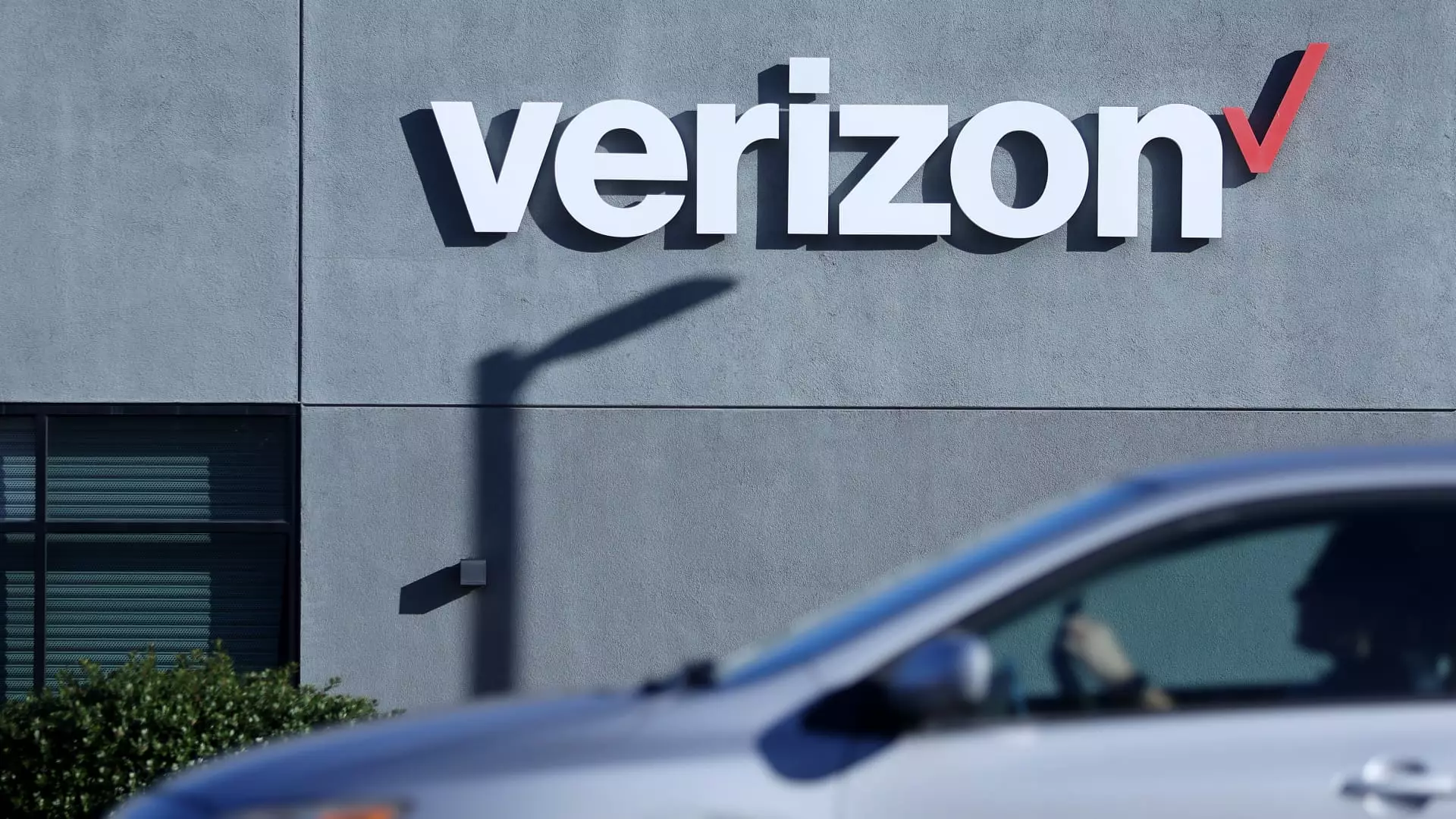In times of economic uncertainty, where geopolitical tensions exacerbate market volatility, investors instinctively seek refuge in more stable financial instruments. One such bastion of stability is dividend-paying stocks—shares that not only promise a stake in a company’s success but also provide tangible, recurring payouts. The allure of dividends becomes ever more significant amidst looming trade negotiations and fluctuating global dynamics that jeopardize overall market sentiment. This article delves into three notable dividend stocks, each backed by comprehensive analysis from respected Wall Street analysts, offering a thoughtful yet critical outlook on their investment potential.
Verizon: A Telecommunications Giant Seeking Revival
In a market that seems increasingly dominated by tech upstarts, telecom titan Verizon Communications (VZ) emerges as a compelling option for dividend hunters. With a robust dividend yield of 6.3%, bolstered by a recent quarterly payout declaration of $0.6775, Verizon’s offerings appeal to income-focused investors. Analyst Michael Rollins from Citi has taken a close look at Verizon’s ambitions to gain ground in broadband and converged services. The organization aims to enhance its converged wireless subscriptions from 16% of its customer base to 17% over the next few years.
However, it’s important to approach such optimism with caution. While Rollins expresses a bullish sentiment regarding Verizon’s future performance, the underlying reality is less idyllic. The company anticipates losing a concerning 75,000 postpaid phone customers in the second quarter—a statistic that could undermine the upbeat projections and cast doubt on revenue growth. Verizon’s strategy of increasing customer retention and enhancing churn metrics seems prudent, yet the question remains: can it realistically recover to its so-called “business as usual” state in the second half of the year?
Perhaps, in a world rife with intense competition, this telecommunications giant is at a crossroads. If it manages to stem customer losses while boosting subscription rates, it certainly has a shot at revitalization. But prospective investors should remain vigilant of the not-so-distant shadow of market fluctuations and be wary of relying solely on analyst projections even when they seem backed by solid fundamentals.
Restaurant Brands International: Profits Over Sales
Next up is Restaurant Brands International (QSR), known for its iconic fast-food chains such as Tim Hortons and Burger King. With a quarterly dividend of 62 cents and an attractive yield of approximately 3.7%, QSR positions itself as a viable option for dividend enthusiasts. In recent discussions, the company continues to vocalize confidence in its long-term growth trajectory, targeting a steady 8% organic adjusted operating income increase by 2028.
But here’s where the plot thickens: despite these ambitious goals, analyst David Palmer reveals that both sales growth estimates for 2025 and 2026 might fall short at 5% and 6%, respectively. This raises significant questions about the company’s ability to deliver on its profit projections. Palmer remains hopeful, attributing the potential for profit growth to robust cost management. However, the disconnect between anticipated sales and profits is a crucial point worth scrutinizing.
While Palmer offers a buy rating with a target price of $86, indicating a potential for upside, one must ponder whether QSR’s strategy of prioritizing profits could entrench it further into market flux. Amidst fast-food’s evolving landscape—with consumer preferences rapidly shifting toward health-conscious choices—can Restaurant Brands maintain the dividend allure while charting a sustainable path for its iconic brands? The implications of cost-cutting measures, should they backfire, could disrupt the dividend flow, leaving investors high and dry.
EOG Resources: Navigating the Turbulent Energy Landscape
Finally, we turn to EOG Resources (EOG), a crude oil and natural gas powerhouse that recently announced an acquisition aimed at bolstering shareholder value. The company’s steadfast commitment to returning capital to its shareholders is a positive takeaway, particularly with a newly declared dividend increase of 5%, resulting in a yield of 3.1%. Analyst Scott Hanold of RBC Capital has expressed optimism about EOG’s strategic acquisition of Encino Acquisition Partners.
However, while the promise of enhanced production capacity and a low leverage ratio showcases EOG’s strengths, investors must remain wary of the volatile nature of the energy sector. Rising global energy prices, fluctuating government policies, and environmental concerns are all variables that can impact EOG’s profitability and operational longevity. To imagine a future where scaled development begins in 2026 sounds promising, but investors need to ask: is EOG’s expansion focused enough to resist the unpredictable tides of market dynamics? The energy sector, after all, is not merely about production volumes; it hinges on sustainable practices and regulatory compliance, two elements that can rapidly shift the balance for any energy company.
In the dance of dividends, while Verizon, QSR, and EOG present compelling cases for investment, the intricate webs of market realities, competitive pressures, and shifting consumer preferences beckon for prudent consideration. Investors would do well to investigate these stocks with a discerning eye—after all, the rush towards dividend stocks should not eclipse the necessity for thorough due diligence.

